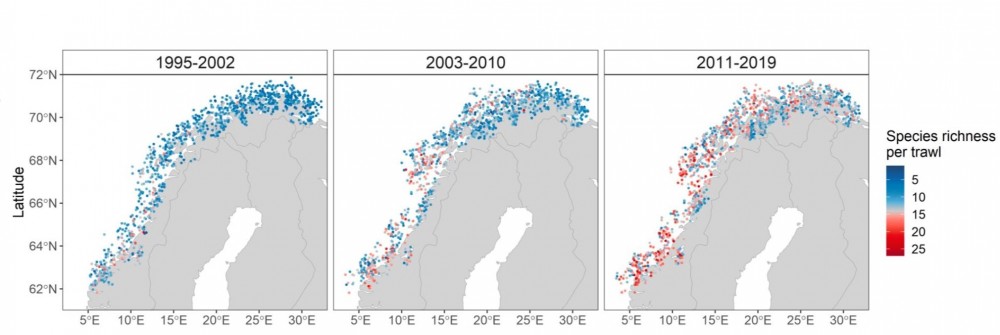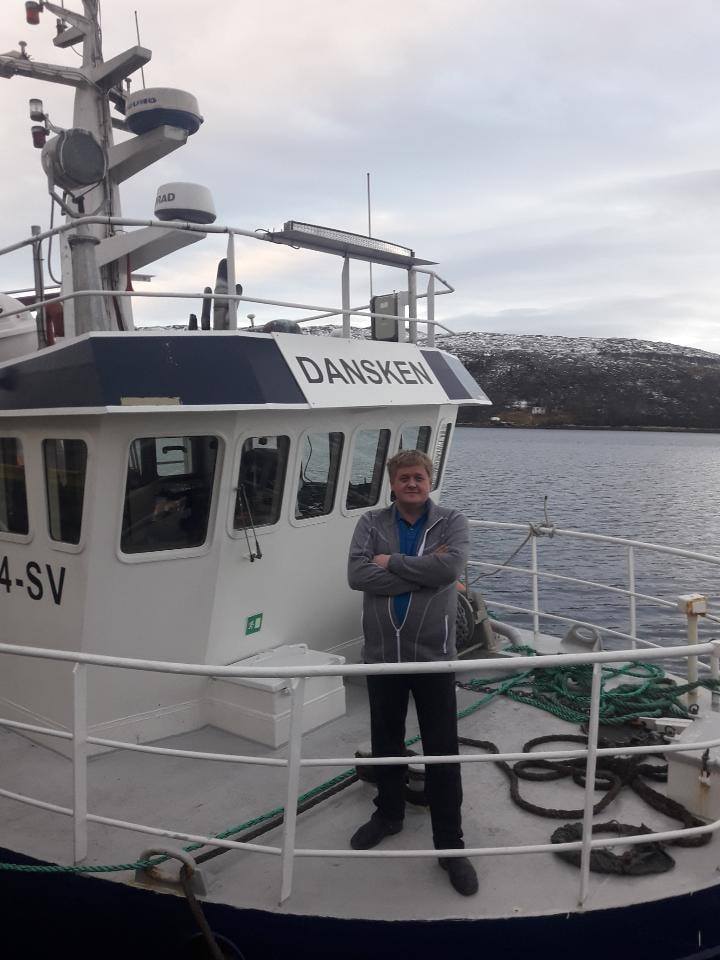ARCTIC
As oceans warm, new fish species appear in the north
More fish species typical of southern waters have been discovered along the Norwegian coast over the past 30 years, according to a new study.

The number of pink salmon is also increasing in Norway due to warming waters.
Photo: Elizaveta Vereykina
Text: Elizaveta Vereykina
THE BARENTS OBSERVER
August 15, 2024
“In the past, a normal trawl catch from Northern Norway offered approximately 6-7 different types of fish. Today, it is entirely possible to catch up to 15 different fish in the trawl”, says the Institute of Marine Research (IMR) researcher Ulf Lindstrøm.
His team from the Institute of Marine Research (IMR) in cooperation with the Arctic University of Norway (UiT) have analyzed data for the last 30 years and detected significant changes to the local water ecosystems in the North due to climate change.
“Among the fish species that have arrived in the north, we find sprat and silver cod”, Lindstrøm is quoted as saying on the Institute of Marine Research website.

Ninety percent of global warming is occurring in the ocean, causing the water’s internal heat to increase since modern recordkeeping began in 1955, NASA reported earlier.
When warming waters prompt the migration of fish, it changes the interaction between the species in the area, the IMR report underlines. This can cause problems for the local stocks of fish that have already been established.
Kent Jensen, who has been fishing in the Barents Sea waters near Kirkenes for 15 years, confirmed the changes to The Barents Observer:
“I see cod, mackerel, yellowfin tuna, herring, and haddock coming up north from south. For example, 10 years ago there was not that much mackerel in the north in the Barents Sea,” he said.
THE BARENTS OBSERVER
August 15, 2024
“In the past, a normal trawl catch from Northern Norway offered approximately 6-7 different types of fish. Today, it is entirely possible to catch up to 15 different fish in the trawl”, says the Institute of Marine Research (IMR) researcher Ulf Lindstrøm.
His team from the Institute of Marine Research (IMR) in cooperation with the Arctic University of Norway (UiT) have analyzed data for the last 30 years and detected significant changes to the local water ecosystems in the North due to climate change.
“Among the fish species that have arrived in the north, we find sprat and silver cod”, Lindstrøm is quoted as saying on the Institute of Marine Research website.

Ninety percent of global warming is occurring in the ocean, causing the water’s internal heat to increase since modern recordkeeping began in 1955, NASA reported earlier.
When warming waters prompt the migration of fish, it changes the interaction between the species in the area, the IMR report underlines. This can cause problems for the local stocks of fish that have already been established.
Kent Jensen, who has been fishing in the Barents Sea waters near Kirkenes for 15 years, confirmed the changes to The Barents Observer:
“I see cod, mackerel, yellowfin tuna, herring, and haddock coming up north from south. For example, 10 years ago there was not that much mackerel in the north in the Barents Sea,” he said.

Fisherman Kent Jensen on his boat. Photo: Personal archive
Some of the fish, as Kent understands, migrate because of the warming waters:
“Today, for example, water around Kirkenes harbor is 17 degrees. It’s the highest I have seen. Five years ago it was about 2-3 degrees lower”, Kent told The Barents Observer.
According to Kent, at this moment Norwegian waters see a huge migration of cod from the Norwegian Sea near the Lofoten archipelago up to the Barents waters near Svalbard:
“In Lofoten, it’s less cod than 20 years ago. Cod won’t make caviar if the water temperature is not correct”, Kent said and added:
“In the future, it could be a problem. I’m 51 now - not in my lifetime. But for generations after - they will have to find new ways to fish.”
Some of the fish, as Kent understands, migrate because of the warming waters:
“Today, for example, water around Kirkenes harbor is 17 degrees. It’s the highest I have seen. Five years ago it was about 2-3 degrees lower”, Kent told The Barents Observer.
According to Kent, at this moment Norwegian waters see a huge migration of cod from the Norwegian Sea near the Lofoten archipelago up to the Barents waters near Svalbard:
“In Lofoten, it’s less cod than 20 years ago. Cod won’t make caviar if the water temperature is not correct”, Kent said and added:
“In the future, it could be a problem. I’m 51 now - not in my lifetime. But for generations after - they will have to find new ways to fish.”
No comments:
Post a Comment